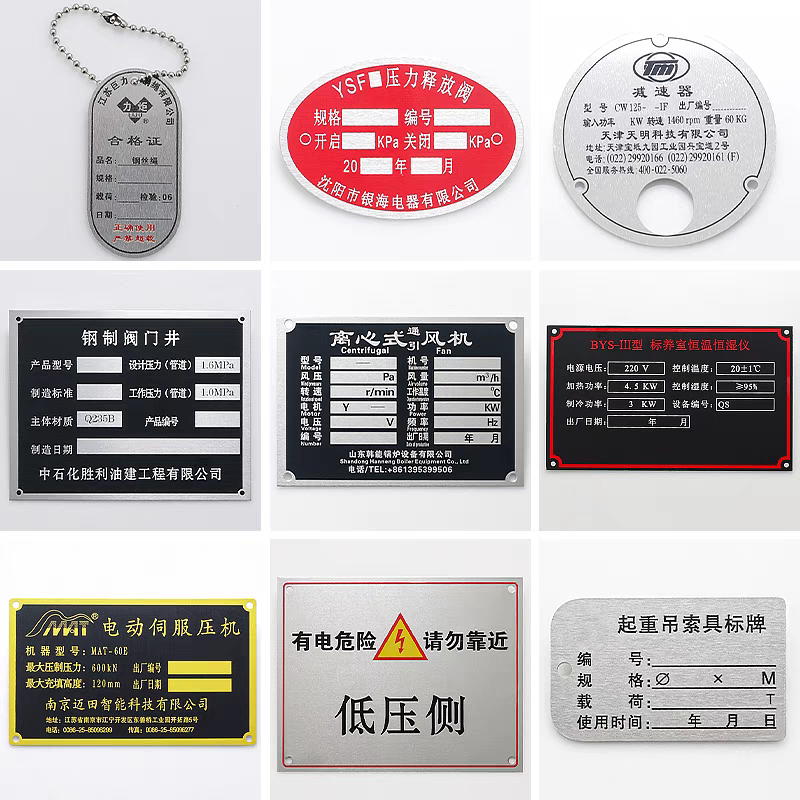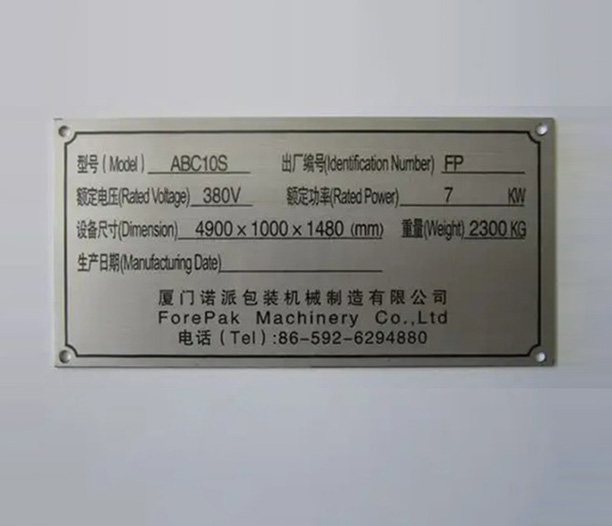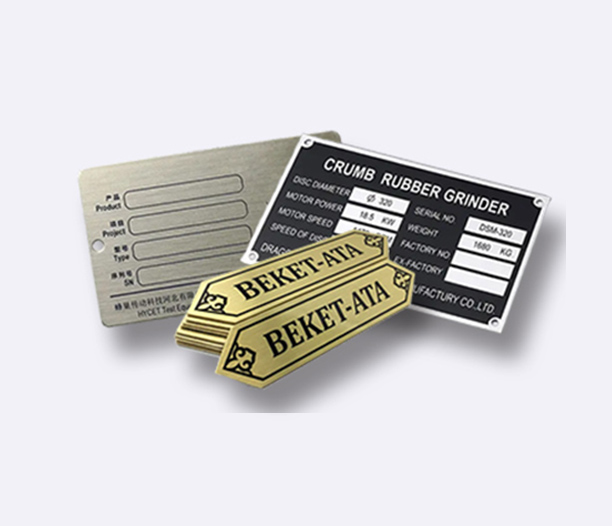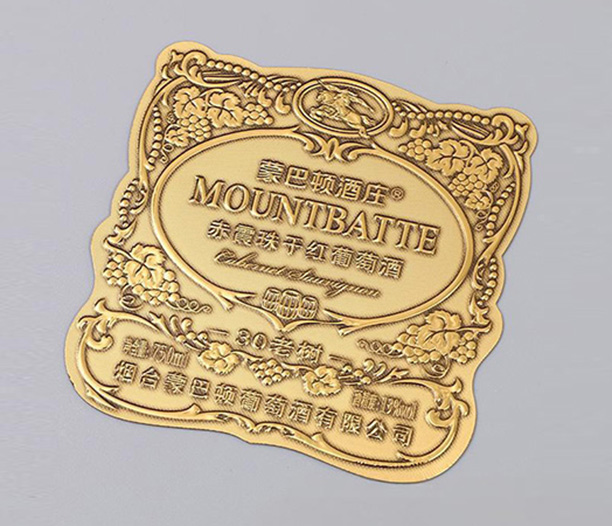In the world of industrial identification, asset management, and safety compliance, the importance of reliable labeling cannot be overstated. Among the myriad of options available, stainless steel cable tags have emerged as a premier solution for demanding environments. These robust markers are designed to withstand the test of time, offering unparalleled durability and legibility. Whether you're managing complex wiring in an industrial plant, identifying cables in a data center, or ensuring safety in marine applications, stainless steel cable tags provide a permanent and secure identification method. This comprehensive guide will delve into five key aspects of these essential tools and address the most common questions users have, helping you make an informed decision for your tagging needs.

What Are Stainless Steel Cable Tags?
Stainless steel cable tags are durable, metallic identification markers specifically designed to be attached to cables, wires, hoses, and other cylindrical objects. They are typically made from grades of stainless steel like 304 or 316, which offer excellent resistance to corrosion, heat, and chemicals. Unlike plastic or paper tags, they are engineered for permanence, often featuring etched, stamped, or laser-marked information that will not fade, smudge, or wear away easily. A common design includes a flat, rectangular tag with a pre-formed loop or a separate attachment wire, also made of stainless steel, that allows it to be securely fastened around the cable. This combination of robust material and secure attachment makes them indispensable in settings where failure of an identification system is not an option.
The 5 Key Advantages of Using Stainless Steel Cable Tags
1. Exceptional Durability and Longevity
The primary reason for choosing stainless steel cable tags is their incredible durability. Constructed from austenitic stainless steel alloys, these tags are built to last. They are highly resistant to abrasion, impact, and crushing forces that would easily destroy plastic or aluminum tags. This resilience ensures that the critical information they carry—such as circuit numbers, safety warnings, asset IDs, or barcodes—remains intact and readable for the entire lifespan of the cable itself. This translates to a lower total cost of ownership, as they rarely, if ever, need replacement.
2. Superior Resistance to Harsh Environments
Stainless steel cable tags excel where other materials fail. Their inherent properties provide outstanding resistance to a wide range of environmental challenges:
Corrosion: They resist rust and degradation from moisture, humidity, salt spray, and many chemicals. Grade 316 stainless steel is particularly valued for marine and offshore applications due to its superior resistance to chlorides.
Extreme Temperatures: They can withstand both high and low-temperature extremes, from freezing outdoor conditions to the intense heat found near engines, boilers, or in foundries, without melting, warping, or becoming brittle.
UV Exposure: Unlike plastic, which can degrade and become discolored in sunlight, stainless steel remains unaffected by prolonged UV exposure, making it ideal for outdoor use.
3. Enhanced Safety and Compliance
In many industries, proper identification is not just a matter of organization—it's a legal safety requirement. Stainless steel cable tags play a crucial role in compliance with standards set by organizations like OSHA, ISO, and other regulatory bodies. Their permanence ensures that safety warnings, lockout/tagout (LOTO) information, and circuit identifications are always visible and legible. This reduces the risk of accidents, electrical hazards, and improper maintenance procedures, thereby protecting personnel and equipment.
4. Security and Tamper-Evidence
The design of most stainless steel cable tags makes them difficult to remove without specialized tools. Many are attached using a stainless steel wire that, once twisted and cut, is very hard to undo without leaving obvious signs of tampering. This feature is vital for security-sensitive applications, calibration seals, warranty seals, and quality control points where it is essential to know if a system has been interfered with.
5. Legibility and Customization Options
Despite their metallic nature, stainless steel cable tags offer excellent options for clear, permanent marking. Information can be applied through:
Laser Etching: Creates a high-contrast, precise, and permanent mark that won't rub off. This is ideal for including text, logos, serial numbers, and even barcodes or QR codes.
Stamping: Provides a deep, physical impression that is highly durable, though best suited for shorter lines of text like numbers.
Embossing: Raises the characters above the surface of the tag for tactile reading.
This versatility allows businesses to create highly customized tags that meet their exact specifications for tracking and identification.

Common Applications for Stainless Steel Cable Tags
Stainless steel cable tags are versatile enough for a vast array of industries. You will commonly find them in:
Industrial Manufacturing: Identifying motor leads, control circuits, and pneumatic lines.
Power Generation & Utilities: Marking high-voltage cables, transformer connections, and underground lines.
Telecommunications & Data Centers: Labeling fiber optic and copper cable bundles for easy tracing and maintenance.
Marine & Offshore: Withstanding the corrosive saltwater environment on ships, oil rigs, and docks.
Aerospace and Defense: Meeting stringent requirements for durability and performance in critical systems.
Transportation: Labeling wiring harnesses in trains, aircraft, and automobiles.
Laboratories and Food Processing: Where tags must withstand frequent cleaning with harsh chemicals or sterilants.
How to Choose the Right Stainless Steel Cable Tag
Selecting the appropriate tag involves considering several factors:
Stainless Steel Grade: Choose 304 for general-purpose use and good corrosion resistance. Opt for 316 for highly corrosive environments, especially those containing chlorides.
Attachment Method: Decide between tags with an integral loop or those that use a separate wire. Ensure the attachment is also made of stainless steel for consistency.
Marking Method: Laser etching is best for complex information and barcodes. Stamping is a cost-effective choice for simple numbers or codes.
Size: The tag must be large enough to hold the required information clearly but not so large that it becomes cumbersome on the cable.
Information Requirements: Plan what data needs to be on the tag (e.g., unique ID, voltage, date, destination).
Common Questions About Stainless Steel Cable Tags (FAQ)
How do I install a stainless steel cable tag?
Installation is typically straightforward. For tags with an integrated loop or a separate wire, you simply:
Wrap the wire or loop around the cable.
Thread the end of the wire through the hole in the tag (or through itself to form a loop).
Twist the ends of the wire together tightly using pliers.
Trim off any excess wire, leaving a neat and secure fastening. For a fully permanent installation, the twisted end can be smoothed down.
Are stainless steel cable tags magnetic?
The most common grades, 304 and 316 stainless steel, are generally non-magnetic or only very slightly magnetic in their annealed state. However, the process of cold working (like bending the wire during attachment) can induce a slight magnetic response in some cases. If working in an environment where magnetism is a critical concern, it's best to consult with the tag manufacturer.
Can stainless steel cable tags be used for outdoor applications?
Absolutely. This is one of their strongest advantages. Their resistance to rust, UV radiation, and temperature fluctuations makes stainless steel cable tags an ideal choice for long-term outdoor use in all weather conditions.
How do I remove a stainless steel cable tag?
Removal is intentionally difficult to prevent tampering. Typically, you will need to cut the attachment wire with a sturdy pair of wire cutters or bolt cutters. The tag itself can often be reused if the wire is replaced, but the original attachment will be destroyed in the process.
What is the temperature range for these tags?
Standard stainless steel cable tags can comfortably operate in temperatures ranging from below -100°F (-73°C) to over 1000°F (538°C), with minor variations depending on the specific alloy. For extreme temperature applications, it's always prudent to confirm the specifications with your supplier.
How do I ensure the text on the tag remains readable?
Laser etching and stamping are designed to be permanent. The markings become part of the metal's surface. Laser etching, in particular, creates a high-contrast mark that is highly resistant to wear, chemicals, and fading, ensuring legibility for decades.
In summary, stainless steel cable tags represent the gold standard in durable, reliable, and safe cable identification. Their unmatched resistance to harsh conditions, combined with their tamper-evident security and long-term legibility, makes them a wise investment for any industry where asset management, safety, and compliance are priorities. By understanding their benefits, applications, and how to select the right one, you can implement an identification system that will perform flawlessly for years to come. When ordinary labels won't survive, stainless steel cable tags provide the permanent solution you need.






